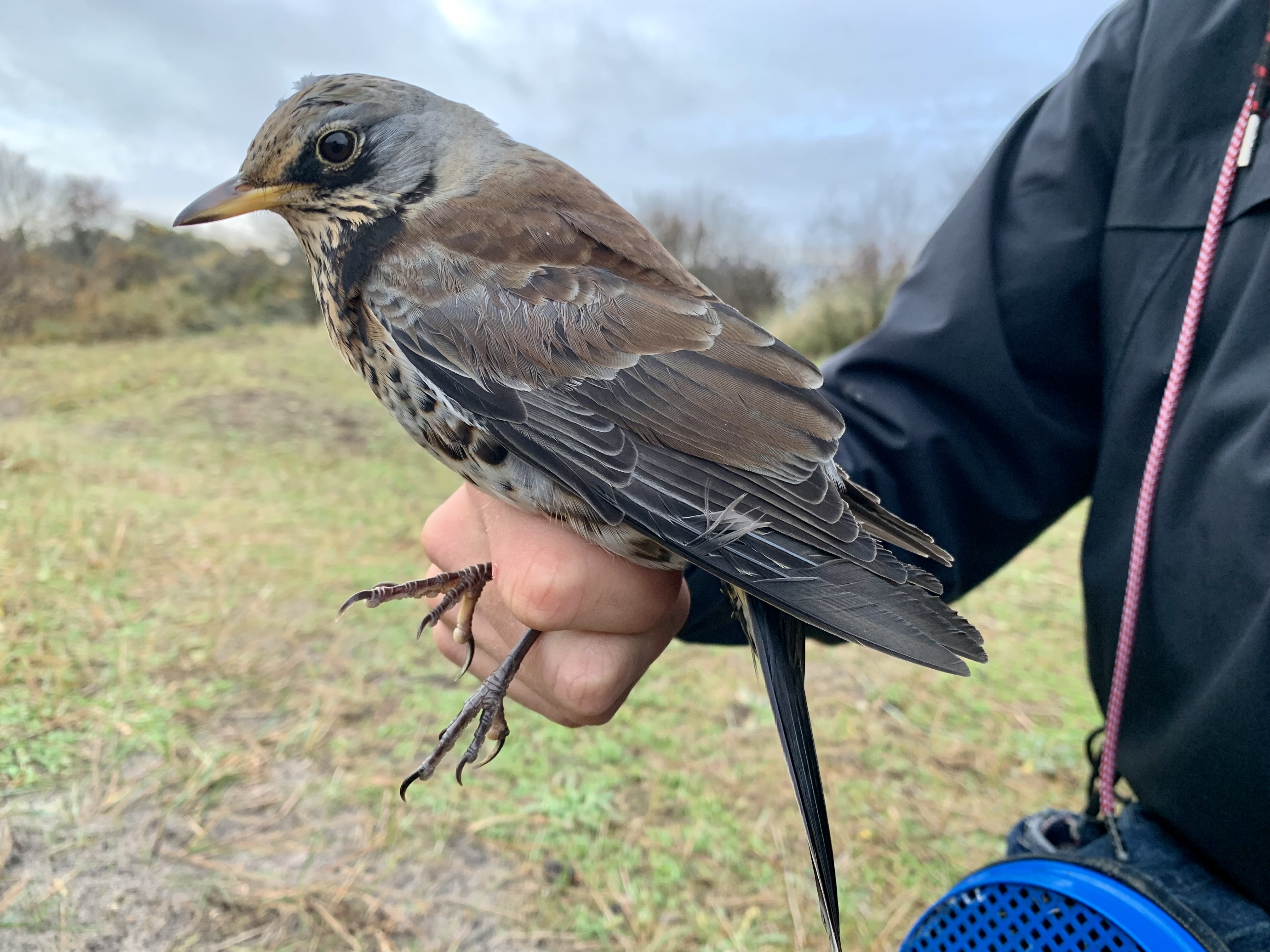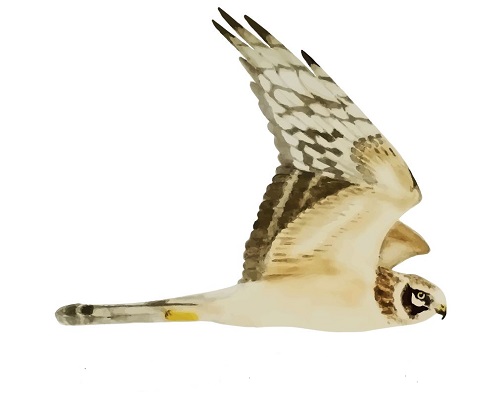Her på Skagen Fuglestations blog bringes korte nyheder i dagbogsformat om hændelser på fuglestationen.
Sibirian Stonechat and Chiffchaff(s)
Like everyday the weatherforecast announced rain, rain and after that some rain. But in between it looked like there might be a chance to be outside and we definitly wanted to use this one. So we woke up like usual and went to Kabeltromlen. Since there should come some rain, we just opened a few nets. With half of the nets open it was easy to control the situation, that the birds do not get wet. We caught some Bullfinches (Dompap) and like the days before there were many pyrrhula (Stor Dompap), which we could recognize by their calls and their winglenghts. Very interesting was a adult Robin, which was moulting its primaries and secondaries! Late date for that! We also caught and ringed a adult male Fieldfare (Sjagger). Fieldfare (Sjagger) - or for my german friends: Wacholderdrossel
Fieldfare (Sjagger) - or for my german friends: Wacholderdrossel much black in the crown feathers - this tells us, that the Fieldfare is a male
much black in the crown feathers - this tells us, that the Fieldfare is a male
Ringing is really fun at the moment and I totally emjoy it! There are so many nice birds around and it’s great to share the birds with the other volunteers, guests and visitors. Overhead we could find Parrot Crossbills (Stor Korsnæb), Waxwings (Silkehale) and a Water Pipit (Bjergpiber). After just one hour we closed the nets due to rain. But the last round was pretty good. First we ringed a Treecreeper (Træløber) and than there was a Chiffchaff (Gransanger), which looked interesing but it was quite yellow, so it looked more like a normal one. When we released it, it called – a sad ”høøø” – this must be a Siberian Chiffchaff (Sibirisk Gransanger), ssp. tristis. A bit sad, that we did not realise before, but at least I’ve got a proof recording of the call. It is very usefull to have a recorder running if you are birding or ringing. I can totally recommend it! Birding-tips with Simon Jr., I should get sponsored by a recorder company!
In the meanwhile, counting seabirds at Nordstrand was fun! The highlights were quite many Parrot Crossbills (Stor Korsnæb) and two Great Nothern Divers (Islom). But since the light was good and the birds were very close, many common species gave amazing views. Espacially after all the rarities you sometimes just see quite bad, it is nice to enjoy the more common species. And if you ask me a young Kittiwake in good light can be one of the most beautiful birds. So the count was good, too, even if the rain soaked the counters.
We, the ringers, used the gained time due to the early net-close to go birding with Simon Sr. We went to the industry area north of the town, where we found the Red-flanked Bluetail the week before. We managed to see 8 Chiffchaffs (Gransanger), which is pretty impressive. Unfortunately, they were all „normal“. No tristis. I still enjoyed them and a late male Blackcap (Munk), too. But we want the rare stuff. ;-) Maybe later? Thomas left us for a phone call, Simon left us too and Hayley went shopping. So I was alone at Batteriskoven, but that does not stop me of finding birds. A pretty late Barn Swallow (Landsvale) flew over, wow!
When I walked thorugh the heathland between the forrest and the camping area I wanted to hurry up a bit, because it looked like there is much rain coming soon. But than there was a bird flying into a pine tree and it did not land inside, like Tits (Mejse) do, it landed on the outermost branch. So i had a look through my binos and it was a pale Stonechat. Siberian Stonechat – this thought came directly into my head. Luckily I was well prepared and had my camera with me, wo I took it out and I managed to get some nice shots. "Siberian" Stonechat ("Sibirisk" Bynkefugl)
"Siberian" Stonechat ("Sibirisk" Bynkefugl)
The rump was uniform cream coloured and the throat was white. Super nice found! Since it is very light it is probably really a Siberian one, but to completely exclude the more rare Amur Stonechat a DNA sample would have been neccessarry. In anyway a nice bird. Look at those autumn colours! 
 I called it out on Zello and hurried up to get into the lighthouse. I’ve got wet, but it was worth it! In the afternoon we found a European Stonechat (Sortstrubet Bynkefugl), many Fieldfares (Sjagger) migrated, we entered data and ate cake.
I called it out on Zello and hurried up to get into the lighthouse. I’ve got wet, but it was worth it! In the afternoon we found a European Stonechat (Sortstrubet Bynkefugl), many Fieldfares (Sjagger) migrated, we entered data and ate cake.
To be honest, this is just the second blog I’ve wrote without looking stuff up or translate parts to make my life easiert. I think this is a progress – it helps me a lot to speak english every day. It feels much more natural and I think this makes my blogposts here more entertaining. Do you agree? Feel free to tell me!
Ringing (Kabeltromlekrattet):
Total: 55
A link to today's observations from volunteers and local observers.
People: Hayley Land, Gustav Nyberg, Simon Kiesé, Thomas Weston, Simon S. Christiansen, Knud Pedersen, Lars and Lone.



